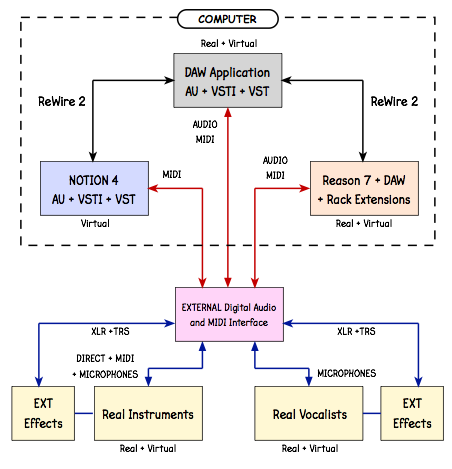Noumenae wrote:Ohhh, okayy! xD Thanks! :3 I did find a TRS to dual TS, and I was going to ask if that was what I needed but I wasn't sure
I rechecked the Yamaha DGX-650 Owner's Guide, and it shows a 1/4" TRS connector for the Main Audio Out, so this is correct for connecting the audio output of the Yamaha DGC-650 to the Alesis iO2 Express Audio Interface to get it digitized for the computer to use . . .
[NOTE: You will see the term "phone plug" used frequently, and it comes from the original use of this style of connector, which was for the switchboards of telephone systems, where telephone operators used "patch cords" with "phone plugs" on each end to connect telephone calls; and this type of connector was designed specifically for this use; but later it was adapted for other uses, since it is smart design . . . ]

Telephone Switchboard and Operators ~ 100 Years Ago
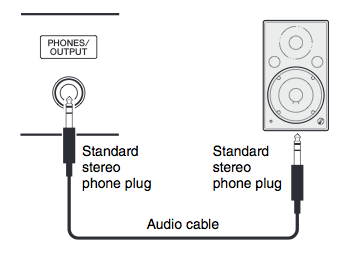
Yamaha DGX-650 Main Audio Out
And it shows a 1/8" mini-TRS connector for the AUX In . . .
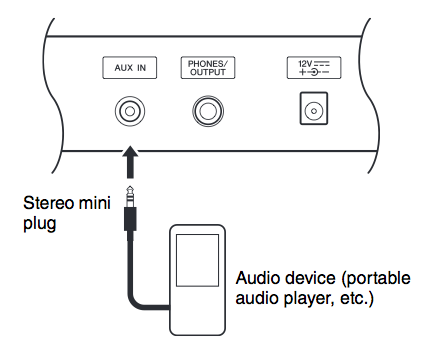
Yamaha DGX-650 AUX In
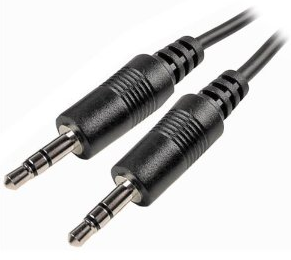
Mini-Stereo Plug (1/8" mini-TRS to 1/8" mini-TRS)
Whether the mini-TRS needs to be split will depend on the output connector for your computer, if there is one. If the computer has an audio output connector and it is a stereo mini-plug (a.k.a., 1.8" mini-TRS), then the cord shown above is the one to get, but if your computer has separate left and right channel audio outputs, you need to match them . . .
THOUGHTS
TRRS typically is used as a balanced stereo connector, but it is not so common, although it depends on the type of audio work one is doing . . .
TRS typically is used as a balanced monaural connector when one is working with external signal processors in a recording or sound reinforcement scenario, but it also is used as an unbalanced stereo connector, which is the way it is used for the Yamaha DGX-650 . . .
[NOTE: You can use TRS cords for monaural sources, so when getting cords, if the price is the same or similar for TRS and TS, then it makes sense to get TRS, because a TRS cord has more possible ways to be used . . . ]
TS is an unbalanced monaural connector, and is used most often for electric guitar cords . . .
There are three general types of audio connectors that are used in audio work, and they have male and female versions, which makes it all the more complex, since depending on the equipment one is connecting it involves mixing and matching audio connector types and genders, as well as sizes, since there are different sizes for the first type (TS, TRS, TRRS), and as I recall there are mini-XLR connectors, as well:
(1) TS, TRS, TRRS . . .
Phone Connector (wikipedia)
(2) XLR . . .
XLR Connector (wikipedia)
(3) RCA . . .
RCA Connector (wikipedia)
For example, you might need to connect the TRS output of a signal processor to the XLR input of another device, and this requires a cord with a TRS connector on one end and an XLR connector on the other end, but you also need to ensure that the gender of the connectors is correct . . .
These are a few examples of "patch cords" that are used in recording studios . . .
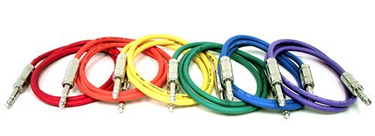
Balanced TRS Male to TRS Male ~ GLS Audio
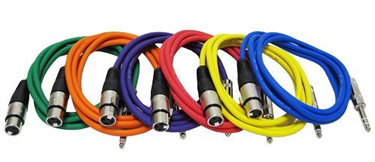
Balanced XLR Female to TRS Male ~ GLS Audio
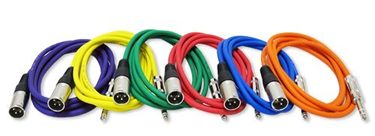
Balanced XLR Male to TRS Male ~ GLS Audio
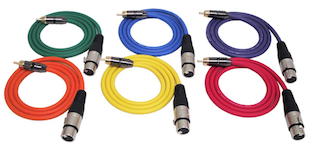
Unbalanced RCA Male to XLR Female ~ GLS Audio
It becomes sufficiently complex that making sense of the connectors and cords required for a particular studio configuration is easier when you make a worksheet or table, which is the way I make sense of stuff like this, where the primary goal of the following worksheets was to determine which types of patch cords were needed and how many of each type were needed, since there were several patch bays in the design, where the general idea was to be able to interconnect the various signal processors from the front of a rack via patch bays and patch cords rather than needing to do the interconnecting from the back . . .
[NOTE: This certainly is a very convenient design, but I am "holding that thought" with respect to doing the patch bays and most of the patch cords, because the patch bays cost from $100 to $200 (US) each, and the patch cords cost approximately $5 (US) each, which makes it more of luxury than a necessity, since most of the time I use VST effect plug-ins rather than real external signal processors, but it is nice to have the design and to understand how to design this stuff . . . ]
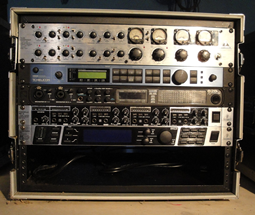
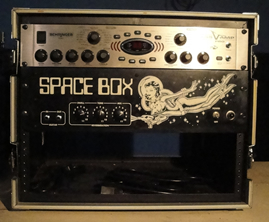
[NOTE: This is the high-level overview . . . ]
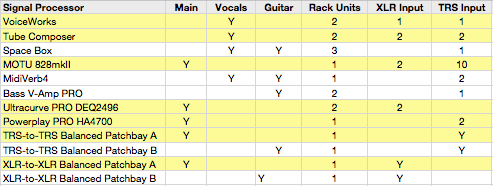
[NOTE: This is the detailed view . . . ]
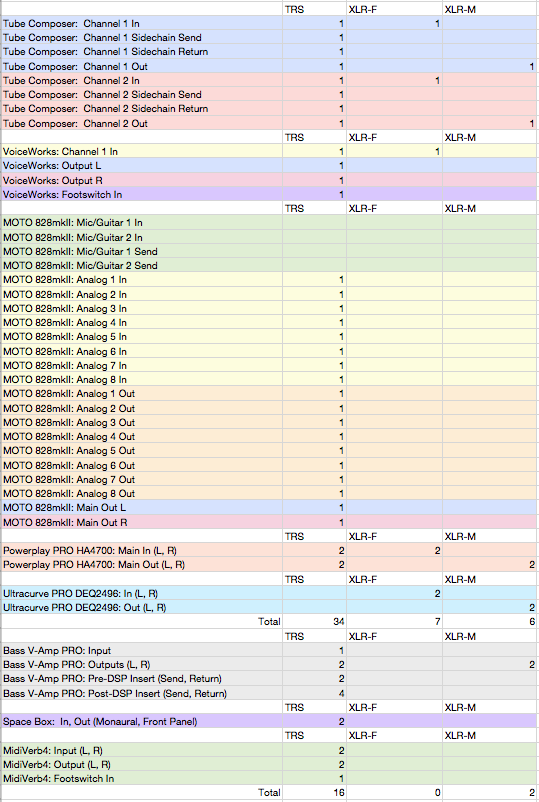
There is more detailed information on this stuff, as well as a lot of other digital music production stuff, in my ongoing topic on calibrated full-range studio monitors in the IK Multimedia FORUM, which I think is an excellent way to get some very practical information on digital music production, which is fabulous . . .
The Fabulous Affordable Studio Monitor System Project (IK Multimedia)
Fabulous!






